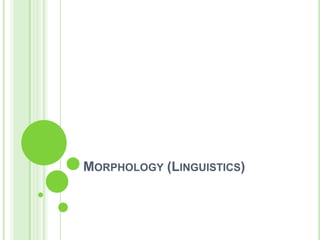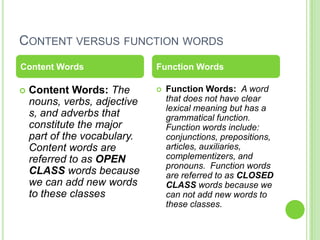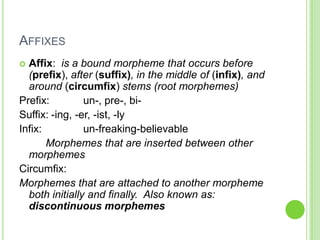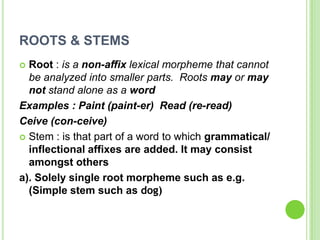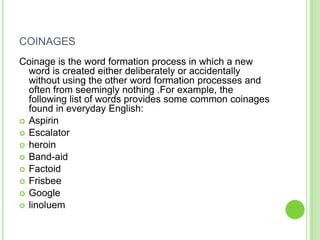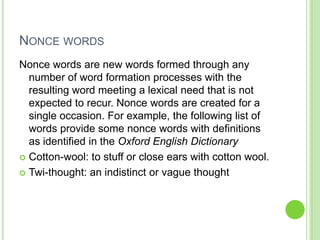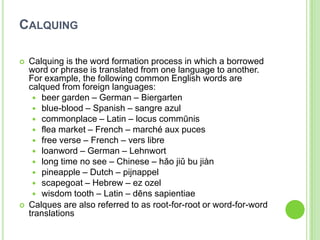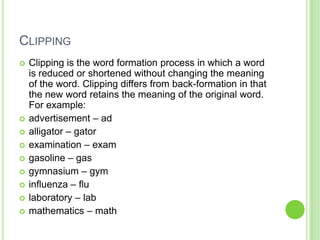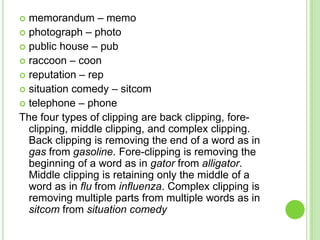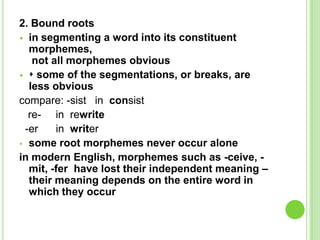Morphology is the study of word structure and formation. It involves breaking words down into smaller meaningful units called morphemes, which can be free or bound. Free morphemes can stand alone as words, while bound morphemes need to be attached to other morphemes to form words. There are several types of morphemes and word formation processes, including affixes, roots, stems, coinages, borrowing, calquing, and clipping. Morphological analysis involves identifying the morphemes within words.
